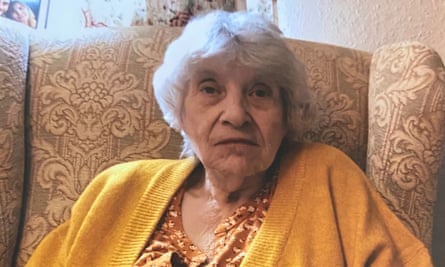Unexplained deaths, shattered lives: here’s another national tragedy hidden in plain sight | John Harris
Just over a week ago I received a message from a grassroots group in the East of England. “Can you investigate this?” it said. “We are hitting similar brick walls as the Post Office campaign.”
There was a link to one local ITV report, aired two weeks before Christmas. When I watched it I was astounded, but I was also aware that it was about a series of very familiar British themes: threadbare public services, a management class that seems perpetually resistant to accountability, thousands of people whose lives have been ruined – and things that should have broken into the national conversation long ago, but have been largely ignored until now. In this case, what happened has been persistently and brilliantly covered in the Eastern Daily Press and on local news – but national media coverage has often been muted and sporadic.
What was sent to me by the Campaign to Save Mental Health Services in Norfolk and Suffolk was about their calls for a criminal investigation into an apparent scandal that emerged decisively last summer and centered on the Norfolk and Suffolk NHS Foundation Trust (or NSFT), which provides mental health care in these two very large English counties. It is centered on the “unexpected” deaths of 8,440 people between April 2019 and October 2022, all of which were in the care of the trust, or up to six months before they died. The story of the failures that led to this statistic dates back at least a decade; the campaign says it amounts to nothing less than “the biggest deaths crisis in the history of the NHS”.
The figure of 8,440 was it most important conclusion of a report by the accounting and consultancy firm Grant Thornton – commissioned by the trust, ironically, in response to campaigners’ fearful claims, disputed by the trust, that there had been a thousand unexpected deaths in nine years. There are no consistent national statistics for such deaths, and no universal definition of ‘unexpected’: in Norfolk and Suffolk, a death is recorded as such if the person involved has not been identified by NHS staff as seriously or terminally ill; the term includes deaths from natural causes, as well as suicide, homicide, abuse and neglect. The period in question includes the worst part of the pandemic, although the trust’s own annual deaths did not peak until 2022-2023. But the numbers still seem breathtaking: They represent an average of about 45 deaths per week.
To put that in some perspective: previous reports on the trust’s death toll had raised alarms that a similar number of people would die every month. And the Grant Thornton report contained another major revelation: the fact that the trust’s administration was so chaotic that in about three-quarters of cases it was unaware of the details of how or why the people involved had died. In addition, following the publication, there were further revelations about the trust and its culture and practices. a Newsnight report said Grant Thornton’s text had been edited “to remove criticism” of the trust’s leadership, which amounted to “fact checking” in an official response. A few months later the BBC announced that the NSFT had recently done so £850,000 spent with the help of a PR agency.
The trust is now in its ninth CEO in ten years and has taken special measures four times; The series of policy decisions underlying this story date back to a “radical redesign” in 2013 that led to staff and bed cuts, and major controversy. But what should be clearly at the forefront of this story are the people who died and the loved ones they left behind. Many of them were the apparent victims of sudden interruptions and delays in care – and premature layoffs – that often occurred amid fragmented systems in which one “team” didn’t seem to know what other parts of the system were doing.
Last Tuesday, for example, I spoke to a grieving father whose son had been in the trust’s care – or what passed for it – and whose death was one of those highlighted in the report but which has not yet come to an inquest . He was diagnosed with bipolar disorder in his teens. By the age of 18 he had been moved from the part of the trust dealing with children and young people to adult care – and for a year and a half he was never under the constant care of a psychiatrist.
Amid repeated suicide attempts, his family requested a formal review of his treatment at least six times, but their requests were “constantly rejected.” Eventually, his GP gave him a prescription for cluster headache medication. “Nobody on the mental health team even realizes he’s been given (this) prescription,” his father told me. “If it had been collected, it would have gone straight back to the GP: ‘That’s not appropriate. You can’t do that.’” Amazingly, an identical prescription was written just a few weeks later. His son used it to commit suicide.

I then spoke to Sheila Preston, an incredibly resilient campaigner who has served on the trust’s board for nine years and is about to take on that role again. She lost her son Leo to a heroin overdose in November 2016: his death, she says, is part of a story of failure that long precedes the outrage over the recent report. Eighteen years earlier, he had been diagnosed with schizophrenia and became accustomed to regular visits from a psychiatric nurse, which suddenly stopped: two months later, while living in a rented flat, his mother said he was ‘cuckooed’ by people involved at the local drug trade he was dead. NSFT insists the coroner “made no criticism of the trust” at his inquest, but his mother has a very different view. “I’m angry,” she told me. “I can never overcome my anger.”
I got the same sense of unbearable anger from Nick Fulcher, whose mother-in-law, Peggy Copeman, Died December 2019: another death taking its place among the 8,440. She had been diagnosed with schizophrenia in the past; Due to a shortage of hospital places, when her mental health appeared to suddenly deteriorate, the trust – despite the fact she was 81 and clearly frail – decided to move her from a care home in Norfolk to a private hospital almost 300 miles away. further up in Somerset. Fulcher’s wife, he said, was told Peggy was due to leave at 10:30 a.m. and left with the intention of saying goodbye and checking everything was OK – but when she arrived at the care home, the private ambulance for her mother reserved. had already left.
Peggy had not been physically examined before the six-and-a-half-hour drive (the trust says such checks were ‘refused’), a failing that was repeated three days later when she was suddenly ordered to move back to Norfolk. She suffered a fatal heart attack and died during a stop on the M11. Her family was informed of her death four hours after it happened; her inquest subsequently concluded that she had not received “immediate medical attention”, and the transport company involved was banned from working in the NHS. The trust insists it is “deeply sorry for the distress caused to Peggy’s family” and says it has made “several improvements” since her death. “She wasn’t fit to come back,” Fulcher told me. “She was treated absolutely disgustingly.”
Whatever the official promises for improvement, one of the people who insist the trust’s deepest failings persist is Natalie McLellan, who lost her daughter Rebecca last November. Rebecca was a trainee paramedic in Ipswich who, according to her mother, lived for her work. She had been diagnosed with bipolar disorder and the trust had assigned her a ‘care coordinator’. But he eventually went on leave – and in the summer of 2023, Rebecca went without care or support for three weeks, despite a long history of depressive episodes and her experiences with severe suicidal tendencies.

Natalie read Rebecca’s own story of what happened: she called the trust repeatedly and was assured that someone would contact her, but the calls never came. When she showed up in person at her local clinic, she was turned away and told that if she didn’t leave, the police would be called. These experiences, Natalie said, shaped her daughter’s understanding that if she were to encounter any crisis, it would be met with neglect and indifference. In mid-November last year, staff at the trust said her only option was to switch her medication to lithium, a drug her mother said she was ‘terrified’ of. Three days later she took her own life.
The trust is now talking about “rapid and widespread changes”. It says that while “increasing demand and NHS staff shortages continue to impact waiting times for services across the country”, “processes” have been put in place to accommodate staff absences, and that “we are taking ongoing steps to reduce unexpected deaths” . It says it has taken “improvement measures” in the area of record keeping, and that there is “more to do, especially in relation to the processing and reporting of mortality data”. But these are the kinds of stories that people in Norfolk and Suffolk characterize as the constituent parts of a huge institutional tragedy. They have a handful of central demands: investigation by police, a public inquiry, and the breaking and rebuilding of a trust they believe has been damaged beyond repair.
After speaking to people who were bereaved, one campaigner told me that the trust’s usual response to bad news was to ‘deny, distract, divert and delay’. But they also had another fear, rooted in the fact that reporting on ‘unexpected’ deaths within the NHS is so patchy. Most of us know how serious the national mental health crisis is, and that the need for care is constantly increasing. But what holes does that leave, and who falls into them?
“We think the number of deaths in Norfolk and Suffolk is relatively high,” this campaigner told me. Then came an awkward pause. “But because the national system is so chaotic and inconsistent, no one knows.” I knew immediately what they meant: that many more of these catastrophes could happen – which, as British scandals often do, remain hidden in plain sight.
